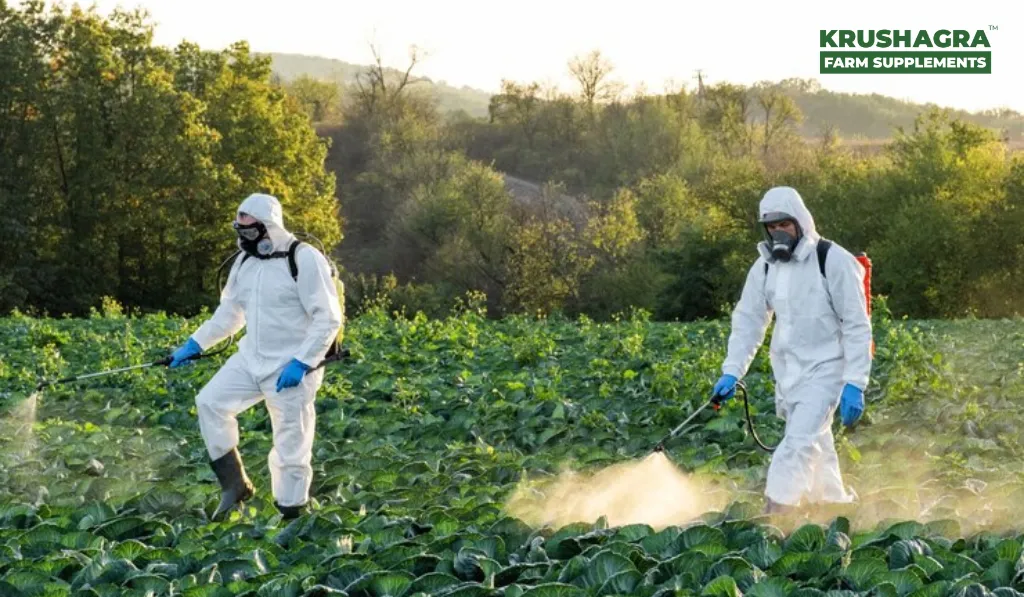A vital component of ecosystems, forests offer a range of advantages to people, including timber, water, and recreational opportunities. Pests, on the other hand, can harm trees and lower their yield in forests. Pests in woods have historically been managed with chemical pesticides. These insecticides, however, have the potential to harm non-target creatures and contaminate water supplies, among other unfavorable environmental effects. Chemical pesticides can also be bad for human health.
Chemical pesticides have some disadvantages, thus biopesticides are a good option. Biopesticides come from living things like bacteria, fungi, and insects. Generally speaking, they are less harmful to both people and the environment than chemical pesticides. Biopesticides can also be more focused, affecting only the intended pest and not other pests.
Advantages of Biopesticides:
Using biopesticides in forestry for sustainable pest management has a variety of benefits. These consist of:
- Reduced environmental impact:Compared to chemical pesticides, biopesticides are often less hazardous to the environment and non-target creatures. This is due to the fact that they are drawn from natural sources and created to specifically target pests.
- Enhanced human health: Compared to chemical pesticides, biopesticides often have a lower impact on human health. This is because they are less hazardous and are less likely to result in short-term or long-term health issues.
- Increased Crop Productivity:Crop yield can be improved by using biopesticides, which are also excellent at controlling pests. This is due to the fact that they are more focused and able to be sprayed with greater accuracy than chemical insecticides.
- Compatibility with IPM:Biopesticides can be utilized as a component of an integrated pest control (IPM) program. IPM is a pest management approach that combines many techniques to control pests. Cultural customs, biological pest management, and chemical pesticides might all fall under this category. Because they are efficient and have little influence on the environment, biopesticides can be an important component of an IPM program.
Types of Biopesticides
There are numerous kinds of biopesticides that can be applied to forestry. These consist of:
- Microbial Biopesticides:Biopesticides that are produced by living organisms, such as bacteria, fungus, or viruses, are known as microbial biopesticides. They are used to kill or sicken pests in order to control them.
- Entomological Biopesticides:Biopesticides with an entomological component: These pesticides include whole or partial insects. They are used to attract, parasitize, or kill pests in order to control them.
- Plant-Integrated Protectants (PIPs):Plant-integrated protectants (PIPs) are biopesticides that are incorporated into genetically modified plants to provide them pest resistance.
Application Techniques
There are numerous ways to apply biopesticides to trees, such as:
- Spraying:The most popular way to apply biopesticides is by spraying.
- Injecting:Using this technique, biopesticides are injected straight into the tree trunk.
- Drenches:Using this technique, biopesticides are injected into the soil surrounding the tree.
Commonly Used Biopesticides in Forestry
Here are some examples of biopesticides that are used in forestry:
- Bacillus thuringiensis (Bt) is a bacterium that produces a toxin that kills certain insects. Bt is used to control a variety of insect pests in forests, including gypsy moths, spruce budworms, and tent caterpillars.
- Trichoderma harzianum is a fungus that can be used to control a variety of soil-borne pests. T. harzianum produces a number of compounds that are toxic to pests, including chitinase and glucanases.
- Entomophagous nematodes are microscopic worms that can be used to control insect pests. Nematodes are attracted to insect pests and can kill them by feeding on them.
Conclusion
A promising solution for environmentally friendly insect control in forestry is biopesticides. In comparison to chemical pesticides, biopesticides have a variety of benefits for sustainable pest management in forestry. They are more targeted, less harmful to people and the environment, and they can be employed as a component of an IPM program. Biopesticides are thus a promising choice for long-term insect control in forests. In general, biopesticides in forestry have a promising future. When it comes to defending forests from pests, biopesticides have a variety of advantages over chemical pesticides. As there is a greater demand for biopesticides, their price is anticipated to go down and their efficacy is probably going to rise. Biopesticides are therefore expected to replace traditional pesticides as the method of choice for managing pests in forests in the future.






